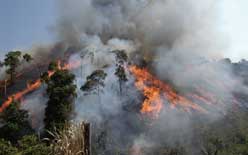Promising solutions are emerging in the form of sustainable rubber practices, aimed at curbing deforestation and substantially reducing the environmental footprint within the rubber sector, adds Angelica Buan in this report.
 For a variety of reasons, industries play an important role in adhering to sustainable rubber practices. Firstly, demand for rubber is consistently high, particularly in areas such as automotive, construction, and manufacturing. Traditional rubber production methods, on the other hand, frequently include deforestation, monoculture plantations, and unethical labour practices, resulting in biodiversity loss, habitat devastation, and social inequalities.
For a variety of reasons, industries play an important role in adhering to sustainable rubber practices. Firstly, demand for rubber is consistently high, particularly in areas such as automotive, construction, and manufacturing. Traditional rubber production methods, on the other hand, frequently include deforestation, monoculture plantations, and unethical labour practices, resulting in biodiversity loss, habitat devastation, and social inequalities.
Industries can offset these negative effects by converting to sustainable rubber. This not only benefits the environment and communities but also helps companies meet consumer demands for ethically sourced and environmentally friendly rubber products.
Southeast Asia to gain from sustainable rubber adoption
Globally, consumer awareness and demand for sustainably sourced products are rising.Southeast Asian countries have a potential to lead the way in satisfying these demands, improving market competitiveness, and securing long-term market access for their rubber goods.
Supplying over 90% of total world rubber demand, the region’s significance arises from its critical role in the worldwide rubber supply chain, as well as the environmental and socioeconomic issues connected with traditional rubber manufacturing.
Tyres have the biggest market share and employ a combination of natural and synthetic rubber to provide the necessary performance and durability. Furthermore, natural rubber (NR) is still used in the production of medical rubber items such as gloves, catheters, and other medical equipment.
The environmental impact is one of these challenges. The huge rubber plantations of Southeast Asia have historically resulted in considerable deforestation and habitat loss, particularly in countries such as Indonesia and Malaysia. This deforestation has an impact on biodiversity as well as contributing to climate change.
Various players are involved in Southeast Asia’s efforts for sustainable rubber. Governments are putting legislation in place to encourage sustainable land use and to assist smallholder farmers in adopting environmentally friendly methods, while private organisations and local communities collaborate on this shared purpose.
Furthermore, multinational companies procuring rubber from this region are increasingly adhering to sustainability standards and collaborating with suppliers to ensure ethical and environmentally responsible sourcing.
Averting deforestation
The expansion of rubber production resulting from growing demand for NR has significantly fueled deforestation, notably in regions like Southeast Asia.
 A study led by the Royal Botanic Garden Edinburgh, utilising new satellite data and advanced computer modeling, revealed that deforestation due to rubber production is three times higher than previous estimates. This is especially so in Indonesia, Thailand, and Vietnam.
A study led by the Royal Botanic Garden Edinburgh, utilising new satellite data and advanced computer modeling, revealed that deforestation due to rubber production is three times higher than previous estimates. This is especially so in Indonesia, Thailand, and Vietnam.
Previous methods struggled to identify smallholder rubber plantations via satellite due to their size and similarity to forests. But with improved satellite imagery, the researchers detected over 14 million ha of mature rubber plantations in Southeast Asia, where more than 90% of global rubber is produced.
Their mapping revealed that over 4 million ha of forests have been lost since 1993 due to rubber-related deforestation—equivalent to the size of Switzerland. Alarmingly, more than 1 million ha of rubber plantations were established in key biodiversity areas.
This underscores the need for policymakers to prioritise rubber production in domestic policies, trade agreements, and upcoming legislation, while also considering the livelihoods of smallholder rubber producers in any regulatory actions.
Additionally, it marks the challenges in tracing rubber supply chains and advocates for including rubber in regulatory processes to enhance traceability efforts and promote sustainable production. It stresses the necessity of using the most reliable evidence to guide policy decisions concerning deforestation caused by major cash crops, a task made more feasible with advanced satellite observation.
